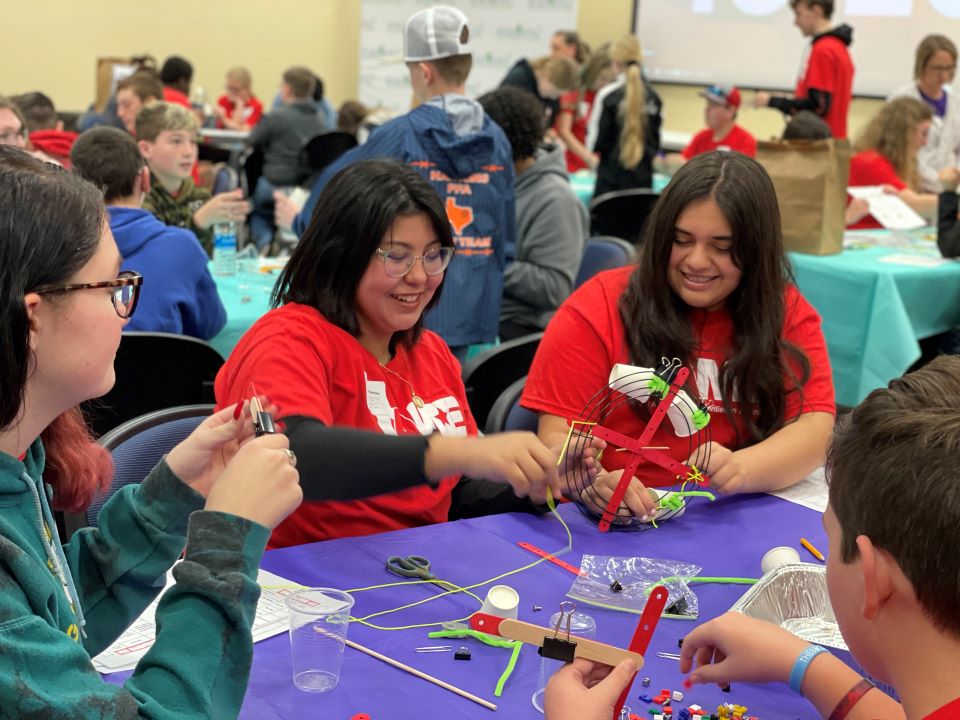Tackling the representation gap in engineering in the Lone Star State

Every year Society for Science awards microgrants to a wide range of organizations doing crucial, community-based work to make the world of STEM more diverse. This year 53 amazing organizations across 24 states and Washington, D.C. were selected to receive $245,000 in grant funding.
To commemorate National Engineers Week, we are shining a spotlight on the Texas Alliance for Minorities in Engineering (TAME), a STEM Action Grant recipient. TAME is dedicated to supporting students from underrepresented groups in the field of engineering, helping them to build confidence and community through impactful programming.
TAME programs include out-of-school clubs, regional engineering competitions and STEM scholarships. According to TAME’s Executive Director, Andrea Herrera Morena, the organization’s initiatives “cultivate a strong sense of belonging to help students from diverse communities remain engaged and excited about engineering and stay on track with math and science coursework. Engineers are at the center of the most important challenges of our time,” Andrea shared. “Conveying this excitement and opportunity to students is at the heart of TAME’s engineering education programs and competitions.”
Founded in 1976, TAME has worked for nearly half a century to help students from underrepresented groups in engineering find inspiration and long-term success in the field. And while their programming has evolved alongside the engineering field, according to Andrea, TAME’s “commitment to supporting the next generation of diverse Texas engineers has remained steadfast.”
TAME has designed a curriculum inspired by the United Nations’ Sustainable Development Goals and the Grand Challenges for Engineer in the 21st Century, allowing students to explore engineering through the lens of current events and a culturally relevant curriculum.
The STEM Action Grant TAME received in 2023 provided support for the development of the TAME Digital Learning Guide, which outlines curriculum for TAME’s clubs based on the first eight Sustainable Development Goals (SDGs):
- No poverty
- Zero hunger
- Good health and well-being
- Quality education
- Gender equality
- Clean water and sanitation
- Affordable and clean energy
- Decent work and economic growth
In 2024, TAME will serve nearly 3,000 middle and high school students across Texas through over 100 engineering clubs and 12 engineering competitions from January and April. These programs will address real-world challenges, emphasizing the crucial role engineers play in making a safer, healthier and more equitable world for all.
While the 2023-24 curriculum is based around the first half of the 17 SDGs, the theme for this year’s regional competitions focuses on the seventh goal: Affordable and Clean Energy.
“At the Regional Engineering Competitions, students from TAME clubs across the region come together to compete in teams where they make new connections, challenge themselves, and innovate solutions to real-world problems,” Andrea explained.
The engineering being done by these students is also being mirrored across Texas, as tech and engineering jobs multiply in the Lone Star State. As the field grows in both size and significance, TAME is committed to addressing the persistent diversity gap in the field of engineering. Andrea noted that despite diversity gains within STEM careers overall, the representation in engineering hasn’t narrowed much in the last two decades.
“TAME believes that the world needs the solutions and innovations that a more representative group of engineers would offer, and that’s why TAME is focused on supporting the potential of girls and students from Black, Hispanic and Native American communities to pursue their engineering dreams,” said Andrea.
So, what’s next for TAME? After the end of the competition season followed by awarding annual TAME scholarships to graduating seniors, the organization will be continuing to explore the role of engineers in solving the world’s most difficult and pressing problems by tackling the second half of the SDGs in the 2024-25 school year.
“We are looking forward to seeing the incredible curiosity, creativity, collaboration and commitment that our TAME engineers contribute!” Andrea shared.


